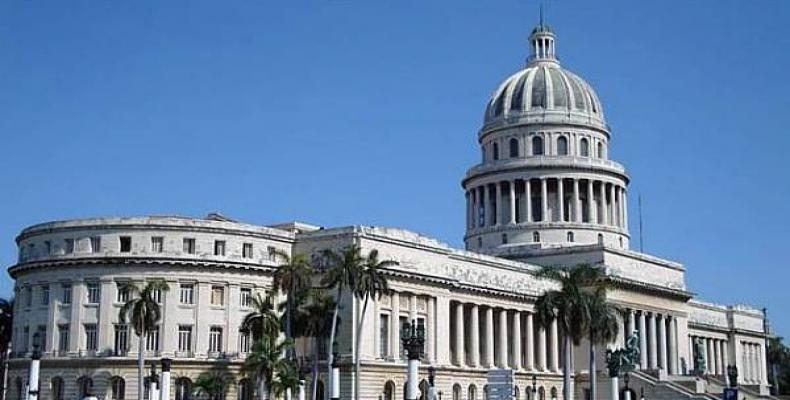Cuba's capital, famous for its five-century history, is also well known for its variety of architectural styles and especially for its Capitol building or El Capitolio, the second highest spot in the city.
Architects and historians describe the Capitol as an almost perfect work of engineering from the beginning of the 20th century. Capitolio was constructed between 1926 to 1929 and the building cost nearly 17 million pesos, a large amount of money at the time. 8,000 specialized workers took part in its construction.
Five million bricks, 38,000 cubic meters of sand, 40,000 cubic meters of rocks, 150,000 bags of cement, 3,500 tons of structural steel and 2,000 tons of iron bars were used.
Built 103 years after the Capitol in Washington, the Cuban replica's dome is 12 feet (3.7 meters) taller at 300 feet (92 meters) and the building has a distinctly different floor plan. Its design is tailored to Cuba's tropical weather, such as multiple patios to maximize air circulation.
The Capitol houses treasures such as the statue that represents the Republic, which was made by Italian artist Angelo Zanelli and is considered the world's third largest sculpture indoors.
The building has played its role in Cuba's history, since its halls hosted the Constituent Assembly and witnessed the enactment of the Constitution in 1940.
After the triumph of the Revolution in 1959, the Capitol became the headquarters of the Academy of Sciences of Cuba, first, and of the Ministry of Science, Technology and Environment (CITMA), later.
Cubans are once again touring El Capitolio, now undergoing renovation and set to reopen as the new home of the Cuban government’s National Assembly. Tours are limited to small, organized visits as part of summer cultural programming through the Office of City Historian, which is behind the restoration of historic Havana.


